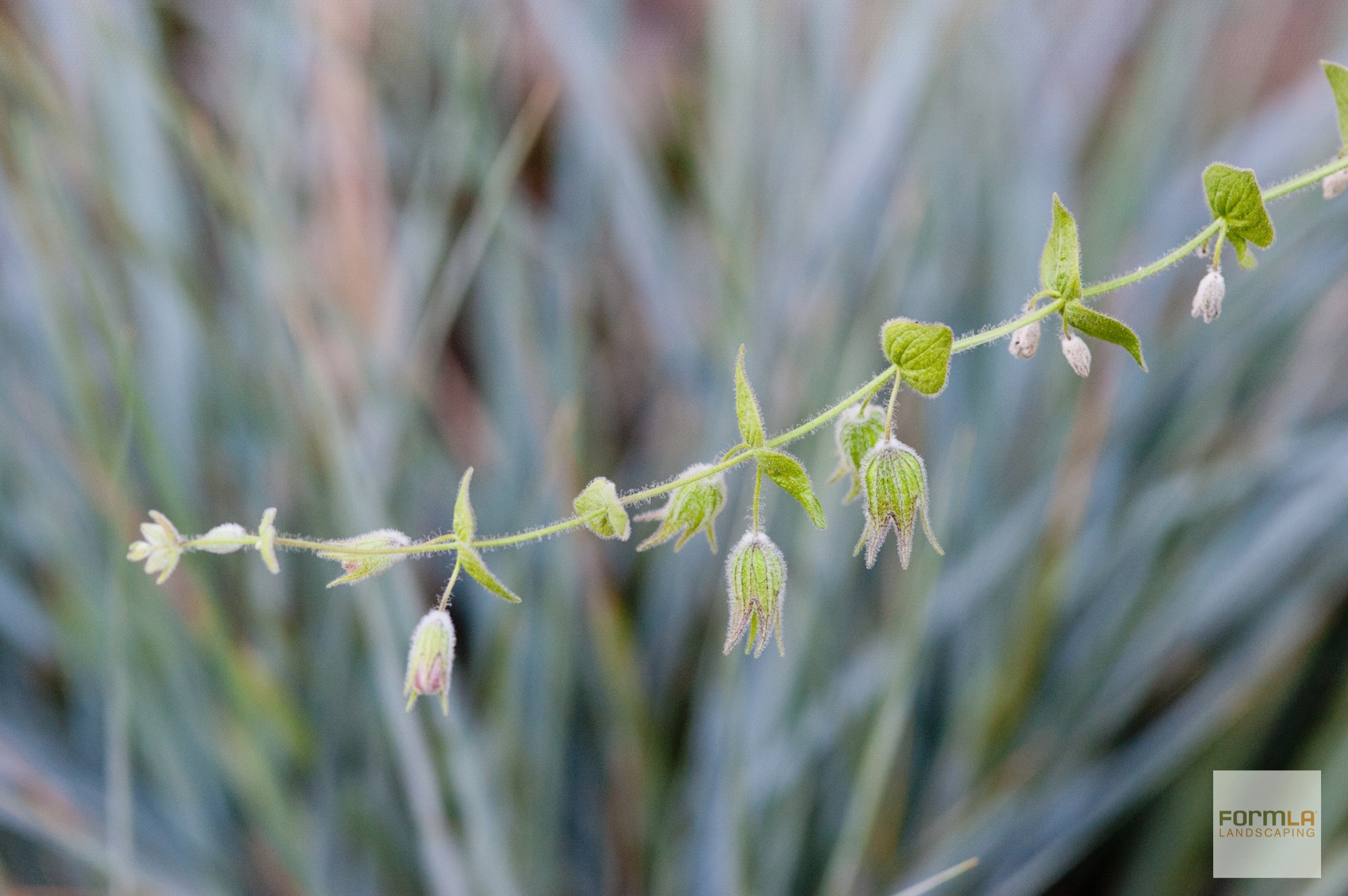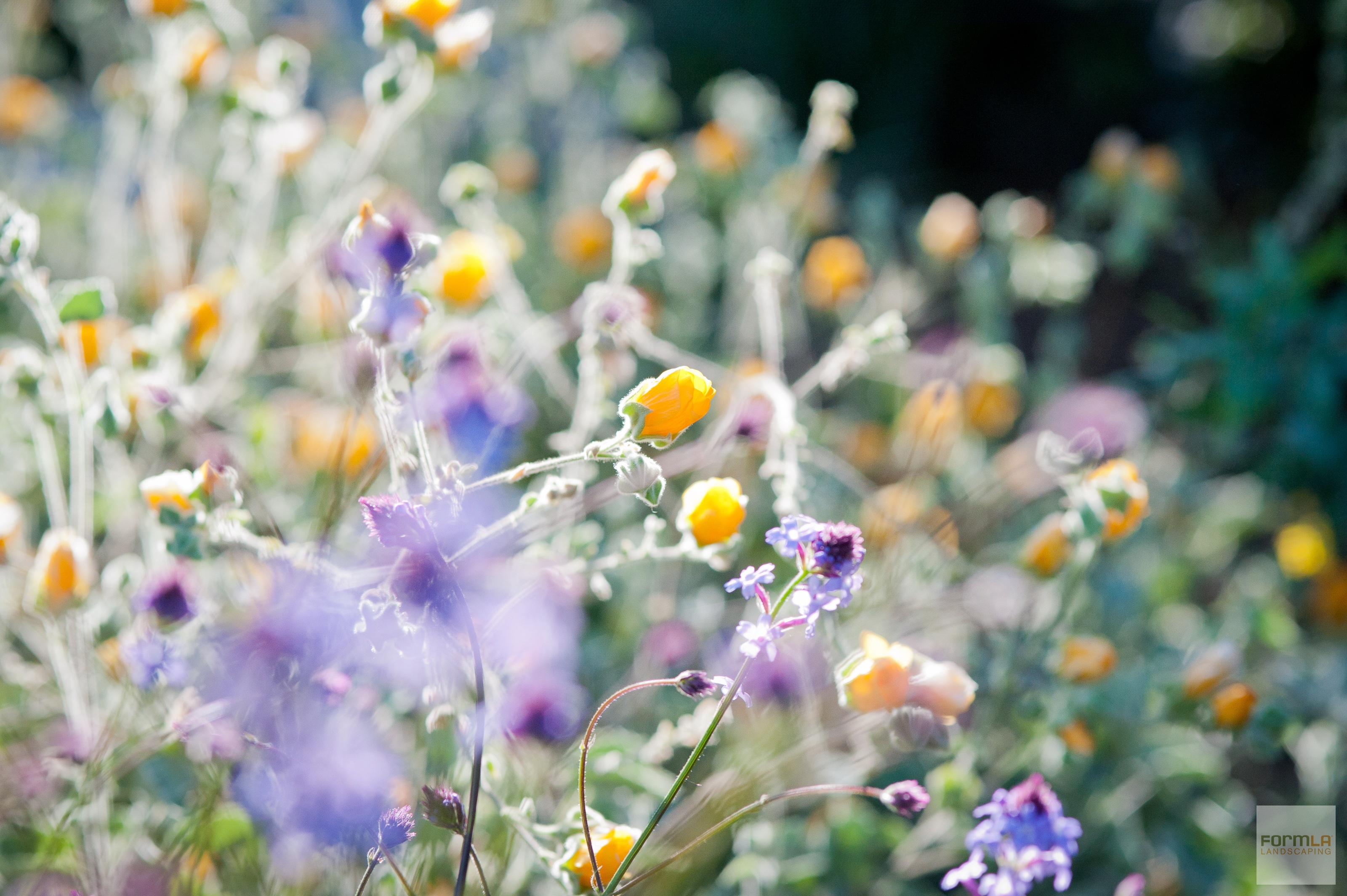4 design tricks will keep your garden bewitching through dormancy
October 2021. By Eric Crow: In late summer and early autumn, many native plants experience dormancy. This can leave a garden feeling a bit haunted. Some garden favorites may disappear, while others may look jaundiced or transforming from lush and leafy to stick-like.
Here are a few tricks we use to ensure your gardens are a treat year round.

Irrigation
It’s pretty common for people to expect native plants to thrive without supplemental water. They are, after all, adapted to LA’s standard allotment of rainfall, and some simply do not like the combination of heat and hydration. We’ve certainly seen some beautiful unirrigated or lightly irrigated spaces.
Gardens with smart irrigation can appear to cheat death as some foliage, like White Sage, respond magically to hydration. The choice to irrigate can be about more than beauty. Irrigation is a critical component for a fire-defensive garden. It can transform potentially dangerous plants like White Sage into well-hydrated, and therefore defensive, features.

Savvy Layering
We know spring favorites like Salvia Cleveladii and buckwheats will be at 30-50 percent in late summer and that Deer Grass will need to be dramatically cut back. Rather than leaving our clients to mourn the empty space they leave, we layer in consistent performers like Indian Mallow and fall bloomers like California Fushia. Foliage that feels with berries, like Toyon, or with foliage that changes color in fall, like Oregon Grape or Western Redbud also create a bewitching evolution of colors and textures.

Building Contrasts
To keep fall gardens lush and leafy, we can also work with contrasts. This might look like planting bright green Dwarf Coyote Bush with pops of silver Giant Wild Rye, Dudleya or Bladderpod. Some foliage has built-in contrast, like the silver-bottomed leaves of Red Buckwheat.

Contentment
Without intervention or intention, it’s likely a native plant garden will have something blooming or berrying through fall. For example, when the purple Lilac Verbena surrounding it fades, this Indian Mallow will keep going strong – both it and Globemallow will perform consistently 10 months of the year. There is nothing wrong with simply focusing attention on the aspects of the garden that remain vibrant during this time.
Yet another option, for those far from the Wildlife Urban Interface, is to be content with a little dry. Dried blooms have structural beauty and many are filled with bird-attracting seed heads. It’s easy to hold onto equanimity once the birdsong starts!
More Information
For a little more reading on the topic, check out: Give It A Rest and Keep It Lit. We discussed dormancy and autumn maintenance at length during Theodore Payne Foundation’s innovative 2021 Native Plant Garden Tour. Here you’ll see an abundance of tips from foundation staff and homeowners as well as our team.